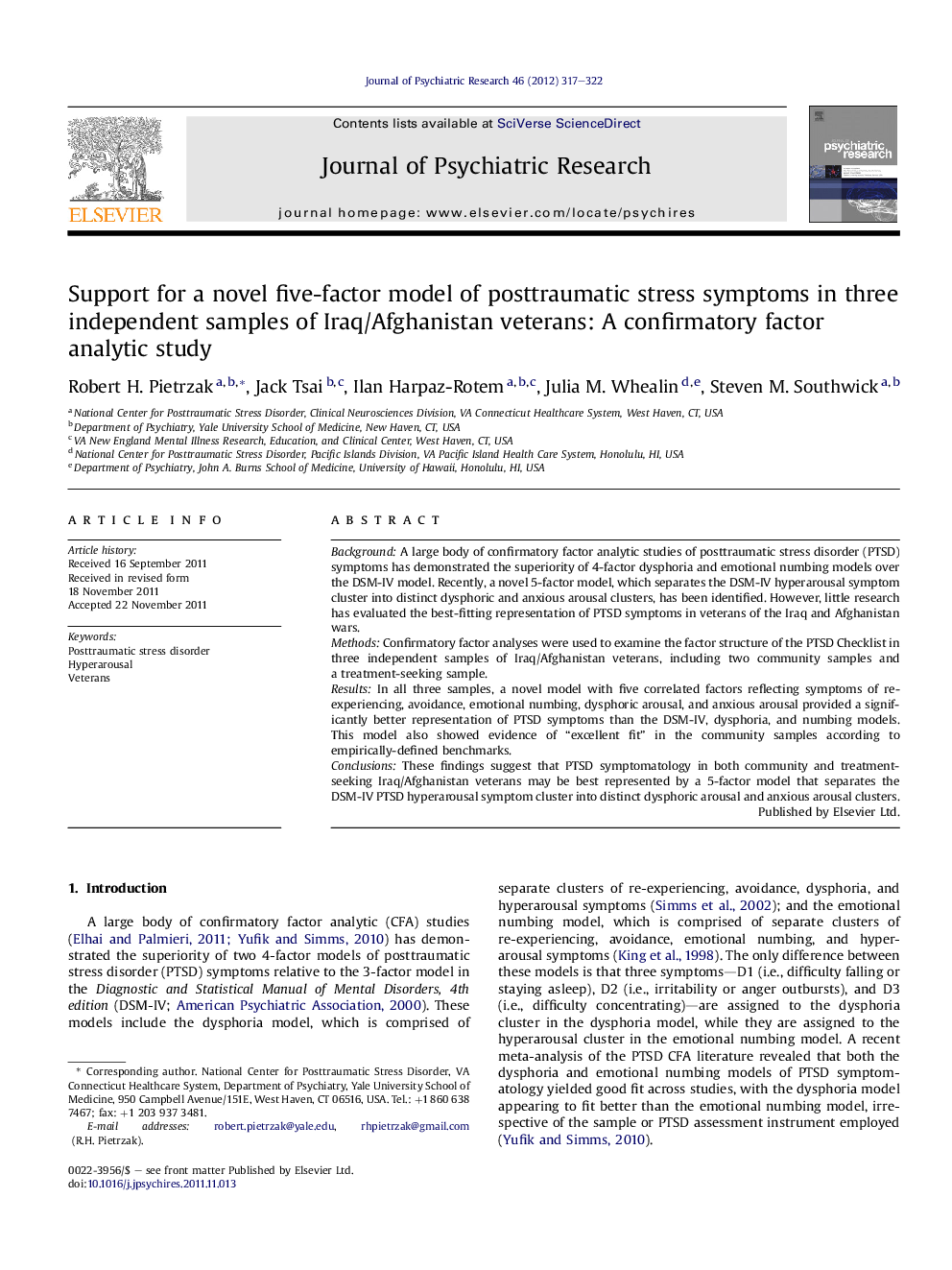| Article ID | Journal | Published Year | Pages | File Type |
|---|---|---|---|---|
| 327084 | Journal of Psychiatric Research | 2012 | 6 Pages |
BackgroundA large body of confirmatory factor analytic studies of posttraumatic stress disorder (PTSD) symptoms has demonstrated the superiority of 4-factor dysphoria and emotional numbing models over the DSM-IV model. Recently, a novel 5-factor model, which separates the DSM-IV hyperarousal symptom cluster into distinct dysphoric and anxious arousal clusters, has been identified. However, little research has evaluated the best-fitting representation of PTSD symptoms in veterans of the Iraq and Afghanistan wars.MethodsConfirmatory factor analyses were used to examine the factor structure of the PTSD Checklist in three independent samples of Iraq/Afghanistan veterans, including two community samples and a treatment-seeking sample.ResultsIn all three samples, a novel model with five correlated factors reflecting symptoms of re-experiencing, avoidance, emotional numbing, dysphoric arousal, and anxious arousal provided a significantly better representation of PTSD symptoms than the DSM-IV, dysphoria, and numbing models. This model also showed evidence of “excellent fit” in the community samples according to empirically-defined benchmarks.ConclusionsThese findings suggest that PTSD symptomatology in both community and treatment-seeking Iraq/Afghanistan veterans may be best represented by a 5-factor model that separates the DSM-IV PTSD hyperarousal symptom cluster into distinct dysphoric arousal and anxious arousal clusters.
